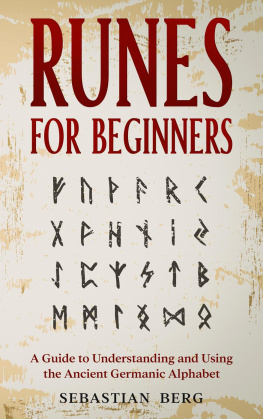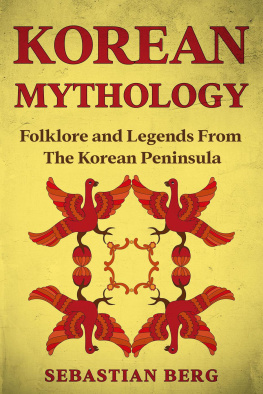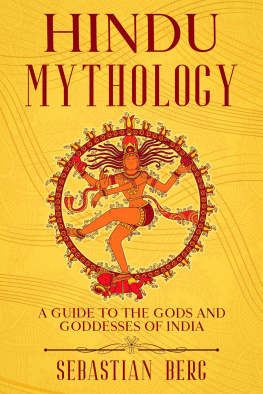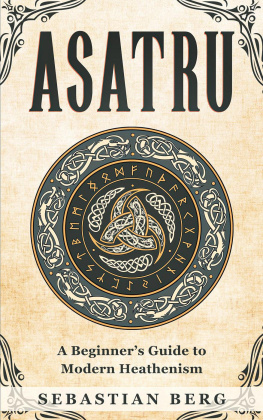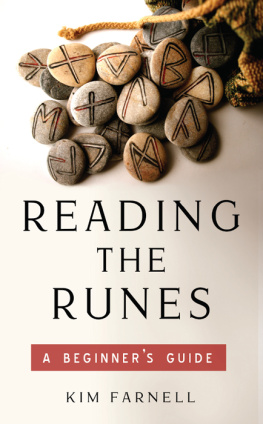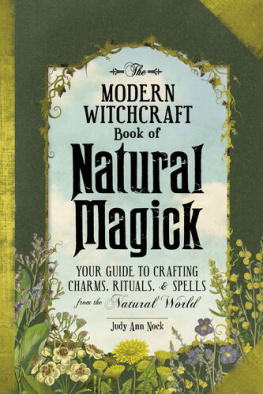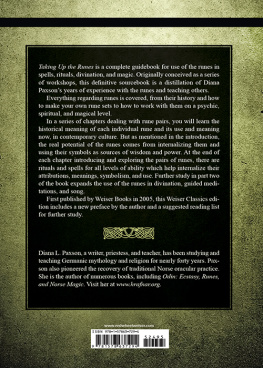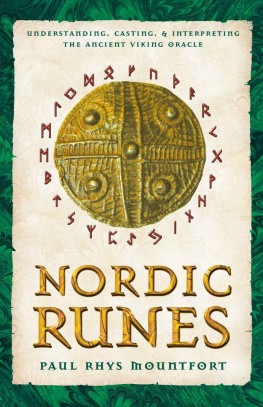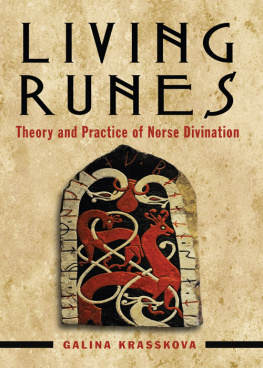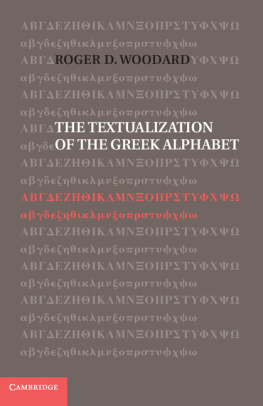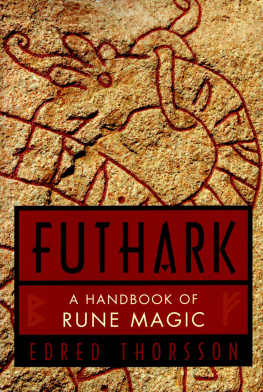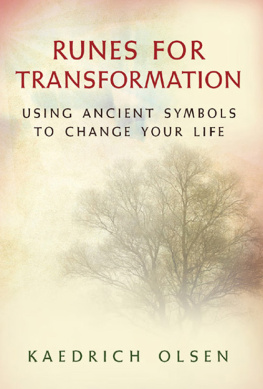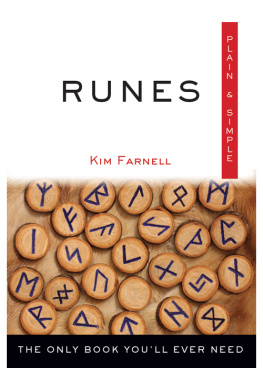Runes for Beginners
A Guide to Understanding and Using the Ancient Germanic Alphabet
Sebastian Berg
Copyright 2020 by Creek Ridge Publishing. All right reserved.
The work contained herein has been produced with the intent to provide relevant knowledge and information on the topic on the topic described in the title for entertainment purposes only. While the author has gone to every extent to furnish up to date and true information, no claims can be made as to its accuracy or validity as the author has made no claims to be an expert on this topic. Notwithstanding, the reader is asked to do their own research and consult any subject matter experts they deem necessary to ensure the quality and accuracy of the material presented herein.
This statement is legally binding as deemed by the Committee of Publishers Association and the American Bar Association for the territory of the United States. Other jurisdictions may apply their own legal statutes. Any reproduction, transmission or copying of this material contained in this work without the express written consent of the copyright holder shall be deemed as a copyright violation as per the current legislation in force on the date of publishing and subsequent time thereafter. All additional works derived from this material may be claimed by the holder of this copyright.
The data, depictions, events, descriptions and all other information forthwith are considered to be true, fair and accurate unless the work is expressly described as a work of fiction. Regardless of the nature of this work, the Publisher is exempt from any responsibility of actions taken by the reader in conjunction with this work. The Publisher acknowledges that the reader acts of their own accord and releases the author and Publisher of any responsibility for the observance of tips, advice, counsel, strategies and techniques that may be offered in this volume.
Table of Contents
I would like to thank you for choosing this book, and I hope that it serves you well as a guideline for runes. Runes have been around for many, many years. They have been around so long, in fact, that we arent really sure when they came to be. It is safe to say, though, that for the Nordic people, runes have always been in their life.
We will start by talking about the history of the runes, which we dont have a lot of information we are certain about, but we can get a good idea of how they came to be. It also goes a long way in showing their importance to the Nordic people and why they are a great magical tool.
Then we will discuss the runes themselves. This is going to be the bulk of the information in this book because we will go over every single rune in the Elder Futhark and their meaning.
The Elder Futhark will be broken down into its three aettir, which are Freyrs, Hagals, and Tyrs Aett. Each section will hold eight runes to create a grand total of 24 runes.
After that will look at how to use runes in divination and magic. This is likely what has brought you here today because rune divination is very popular among people who already do tarot, or who is afraid to have to memorize the meanings of all the tarot cards. Since there are only 24 runes, its a lot easier to remember their meanings and interpret readings.
So lets get started.
Chapter 1: What Are Runes
M ost runologists like to argue about the details of the history of runes, but there is an agreement about the general outline. Runes were thought to have been created from some of the Old Italic alphabets that were used by the Mediterranean people who lived in the first century CE. They lived south of the Germanic tribes. Early Germanic symbols like those that were preserved in rock carvings in northern Europe helped to develop the script.
The earliest runic inscription was found on a Meldorf brooch that was created in northern Germany about 50 CE. It was a very ambiguous inscription, and scholars have been split over whether the letters are Roman, runic, or a combination of both. The first clear inscriptions were found on the Ovre Stabu spearhead found in southern Norway and the Vimose comb out of Vimose, Denmark; both of these dates back to about 160 CE. The Kylver stone in Gotland holds one of the earliest carvings of the whole Futhark in the correct order. It has been dated to around 400 CE.
Their switch up with writing, from southern to northern Europe, was caused by Germanic warbands who encountered Italic writing during wars against their neighbors to the south. This is also supported by the theory that the runes were associated with Odin. He was the god of war and the patron of all of the war activities. Tacitus, the Roman historian, had explained that Odin was the main god within the pantheon of most of the German tribes during the first century. It isnt clear if the cult of Odin and the runes rose up together or if the latter came before the first doesnt really matter.
The way ancient Germanic people perceive the runes is that they dont come from a source that was as mundane as the Old Italic alphabet. They did not invent the runes, but pre-existed and eternal forced that Odin found by dealing with his harrowing ordeal. This story comes from an Old Norse poem called Havamal or The Sayings of the High One :
I know that I hung on the wind-blasted tree all of the nights nine, pierced by my spear and given to Odin, myself sacrificed to myself on that pole of which none know where its roots run.
No aid I received, not even a sip from the horn. Peering down, I took up the runes screaming, I grasped them then I fell back from there.
The tree that Odin hung himself from is said to have been Yggdrasil, which is the world tree found in the middle of the Germanic cosmos. Yggdrasils roots and branches hold up the Nine Worlds. Right under this tree is the Well or Urd, where you will find a lot of wisdom. The runes have their own dwelling place in the water. This can be seen in a different Old Norse poem called the Voluspa or Insight of the Seeress :
There stands an ash called Yggdrasil; a might tree showered in white hail. From there come the dews that fall in the valleys. It stands evergreen above Urds Well.
From there come maidens, very wise, three from the lake that stands beneath the pole. Once is called Urd, another Verdandi, Skuld the third; they carve into the tree the lives and fates of children.
The three maidens that the poem talks about are the Norns and the carvings that were on the runes. This has provided and a clear connection between the runes and the Urd or Well, as well as magic. The magic in them comes from the Norn's ability to carve the fate of every being.
Once Odin discovered the runes through his self-sacrifice and spent nine days fasting as he stared into the Well of Urd, he then gave the runes to the very first runemaster. His sacrifice was imitated symbolically in ceremonies where candidates learned about the history of the runes. There isnt any concrete evidence about this practice that has survived over the years.
Next page
